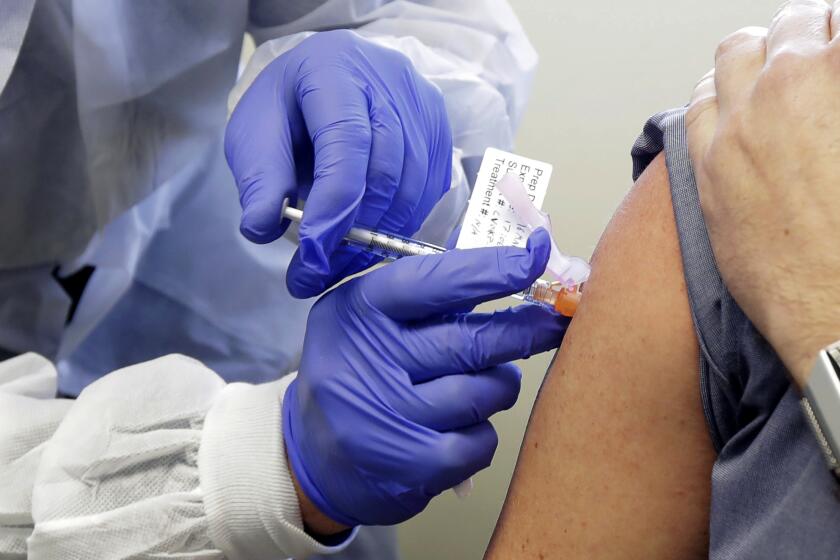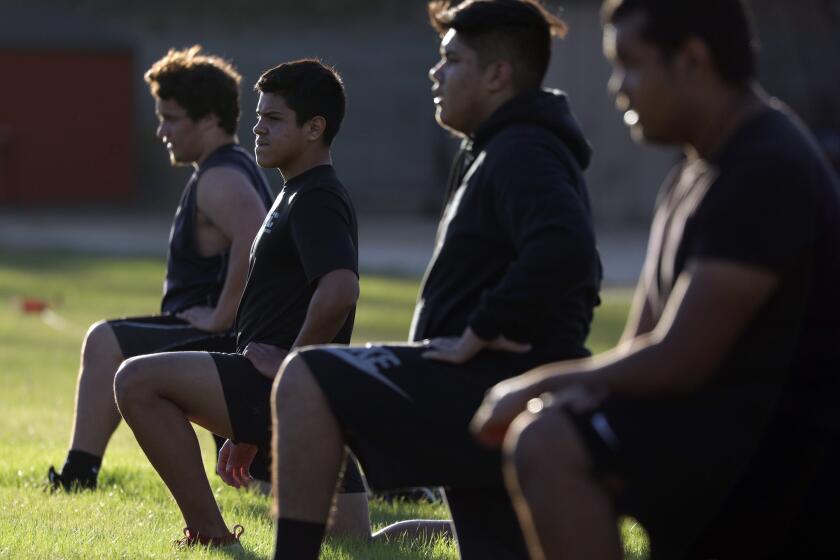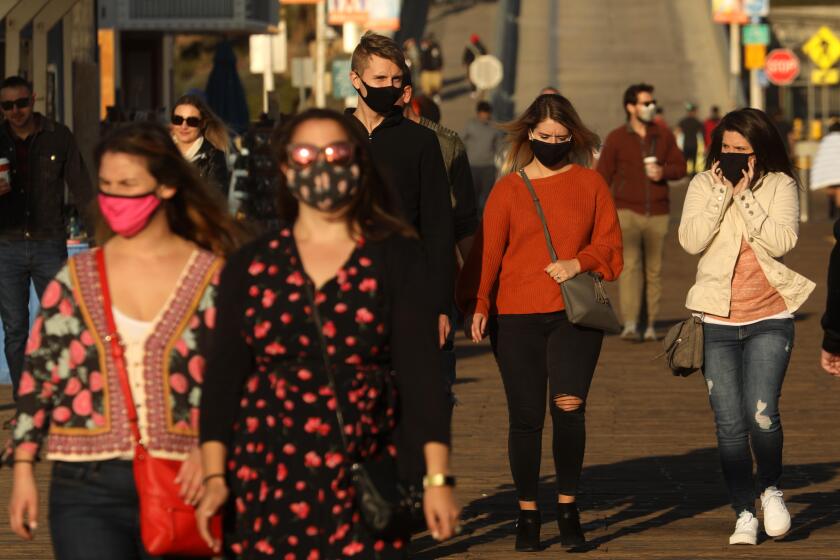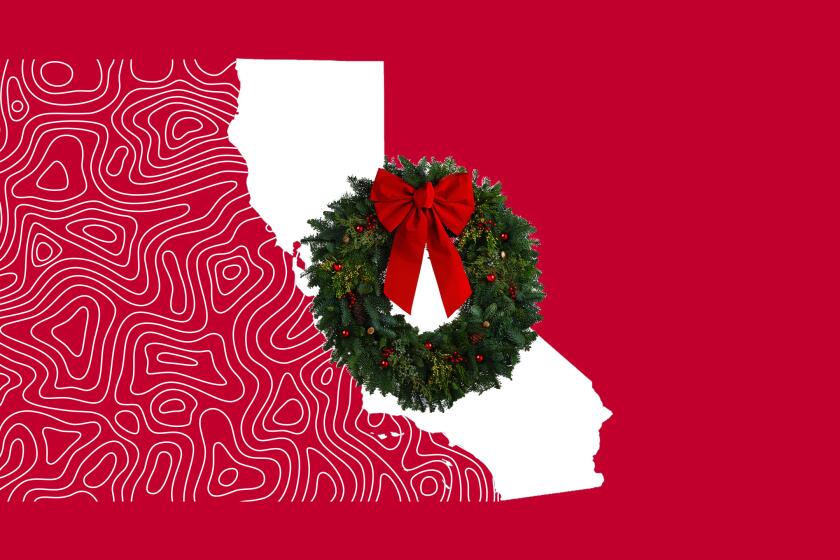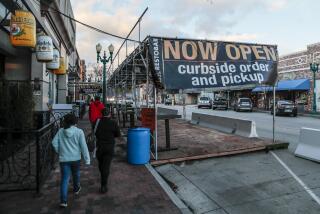L.A. told to stay at home as much as possible as COVID-19 brings ‘new level of danger’
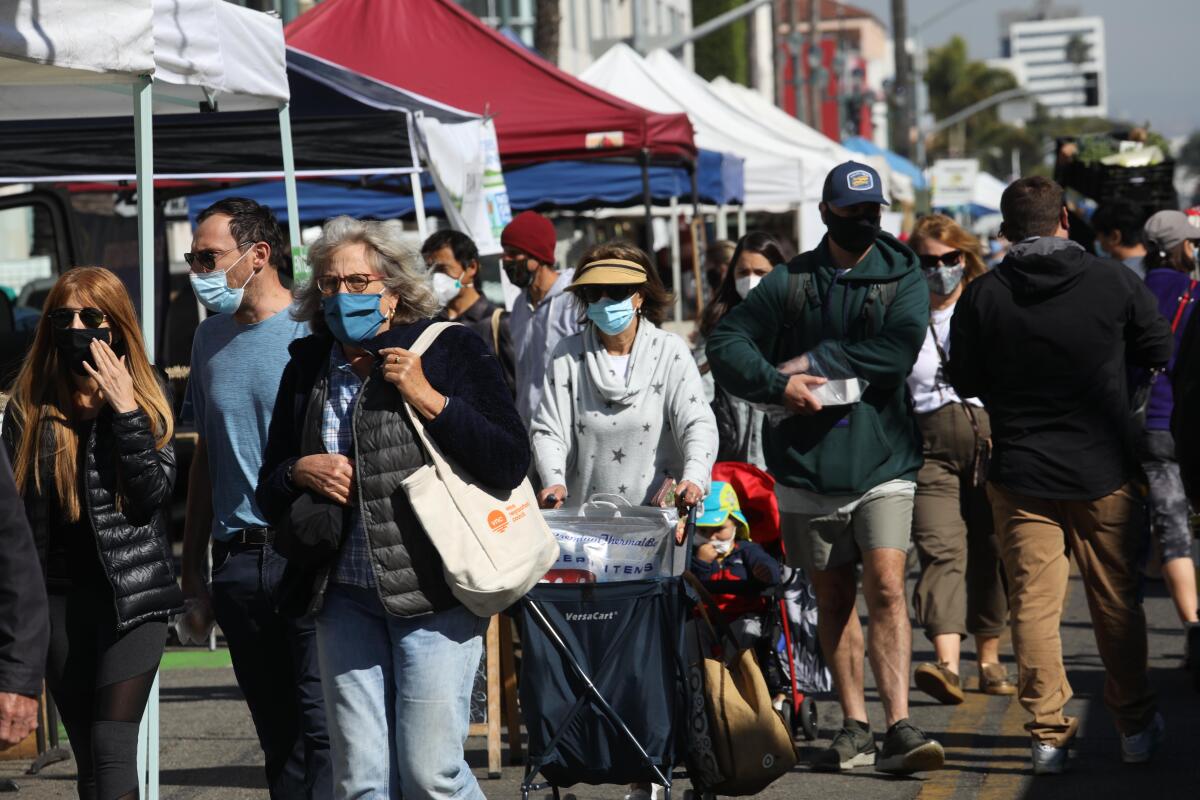
There are growing calls for Los Angeles County residents to stay at home as much as possible for the next two to three weeks as the coronavirus surges and the Thanksgiving holiday season brings new dangers.
Officials have been sounding the alarm in recent days about the rapid spread of the virus in the region and have warned that more restrictions could be coming, including a possible curfew. Mayor Eric Garcetti went a step further Monday by saying remaining at home when possible is essential in slowing the outbreak.
The call falls far short of the strict safer-at-home order issued in March. But it illustrates the dire situation L.A. and the rest of California face in the coming weeks if the surging numbers in cases don’t start decreasing.
“This is a different kind of moment, a new level of danger,” Garcetti said. “If we don’t make these decisions now, there really is only one outcome: We will almost certainly have to shut things down again. And more people will get sick and die.
“We must stay at home as much as possible for the next two to three weeks, except for accessing essential services, food and outdoor exercise,” he added.
Coronavirus vaccines developed by Moderna and Pfizer show highly promising preliminary results in large-scale clinical testing. But key questions remain.
California on Monday recorded 13,412 cases, a single-day record, according to the Los Angeles Times’ coronavirus tracker, an independent county-by-county tally.
Across California, coronavirus cases are surging at an unprecedented pace, even worse than the second surge of the year, in the summer. Weekly coronavirus infections across California are now nearly 150% worse than a month ago, according to a Times analysis, rising from about 22,600 in a week to 56,000 for the seven-day period that ended Sunday.
Hospitalizations statewide are up 51% over the same period. And the rate at which coronavirus tests are coming back positive over the past week is now 5%, nearly double that of a month ago, when it was 2.6%. Deaths are expected to climb.
“I’m here with the strongest message of warning: The risk of this disease has never been higher. And the accelerating pace of infections has never been swifter,” Garcetti said. “Los Angeles is in a very dangerous situation. The alarm bells are ringing.”
Garcetti said he suspected that the biggest reason why L.A. is in such danger is because residents have relaxed their vigilance.
“It’s really the gatherings that are happening on a social basis, casually,” Garcetti said. “We need to stop that gathering for a few weeks to try to get this under control.”
Student learning will continue to pay a price for rising coronavirus infection rates, but reopening campuses varies by school, school district and county.
The mayor announced an expansion of government testing programs Monday. The city will expand its mobile testing programs, launch testing at Los Angeles International Airport and establish a “super walk-up” site in the northeast San Fernando Valley, where infection rates are high.
Garcetti also said city officials will step up enforcement of COVID-19 pandemic rules for businesses and could revoke permits for facilities such as indoor gyms and bars operating in violation of public health orders.
To be sure, California still remains in a better position relative to other states, ranking 40th out of the 50 states, the District of Columbia and Puerto Rico in terms of the cumulative number of coronavirus cases per 100,000 residents. California’s relatively quick action at issuing the nation’s first statewide stay-at-home order on March 19 is credited with saving many lives, averting a widespread overwhelming of hospitals.
“Back in July, we did not go back to a safer-at-home order. And we got our house in order,” said Barbara Ferrer, the L.A. County director of public health. “I don’t see any scenario in which we would have to go back to safer-at-home unless we feel like we have a real threat to the healthcare system.”
Nonetheless, the pandemic remains one of the deadliest disasters in California’s modern era, with more than 18,300 dead — six times worse that the estimated death toll from the 1906 San Francisco earthquake and 10 times worse than the COVID-19 death toll reported in Japan.
California’s death toll was dramatically worsened by disastrous reopening efforts in May and June, which officials later acknowledged was done too quickly.
Both Garcetti and Ferrer point out the seriousness of the latest turn of the pandemic in announcing new efforts to try to stem the tide of the pandemic, especially as Thanksgiving approaches.
Health experts continue to warn against gatherings with anyone outside your household during the holidays.
“If you have plans to celebrate Thanksgiving with others who are not in your household, please make sure that you celebrate outdoors with only two other households,” Ferrer said.
The outdoor celebrations should last no more than two hours; everyone should be wearing a mask when not eating or drinking; and people should stay at least six feet from others who don’t live in their household.
But it’s much safer to celebrate with only the members of your household. People should be traveling only if it’s essential or an emergency, Garcetti said.
Garcetti warned that Canada’s Thanksgiving, which was held Oct. 12, resulted in huge spikes in infections in some cities there.
“Take the precautions to ensure the people we love are still here to gather next Thanksgiving,” Garcetti said.
Officials are hoping to avoid a stay-at-home order, like the one issued in the spring.
“We have to get back to playing by the rules,” Ferrer said. “I’d like to say I have a lot of confidence that we actually get back to doing what we did successfully after our last surge.”
So you’re not traveling for the holidays. Here’s what to do in Southern California, including where to hike, play in the ocean and spend a day trip.
But if people decide to flout recommendations and gather for Thanksgiving in big celebrations, the resulting increase in disease could give authorities no choice but to consider more severe restrictions than those in place today in order to avoid overwhelming hospitals.
Such rules could include stricter occupancy limits at stores and restricting hours of operations at businesses.
“This isn’t like we don’t know what to do. This is about getting back to doing what works,” Ferrer said.
More to Read
Sign up for Essential California
The most important California stories and recommendations in your inbox every morning.
You may occasionally receive promotional content from the Los Angeles Times.
